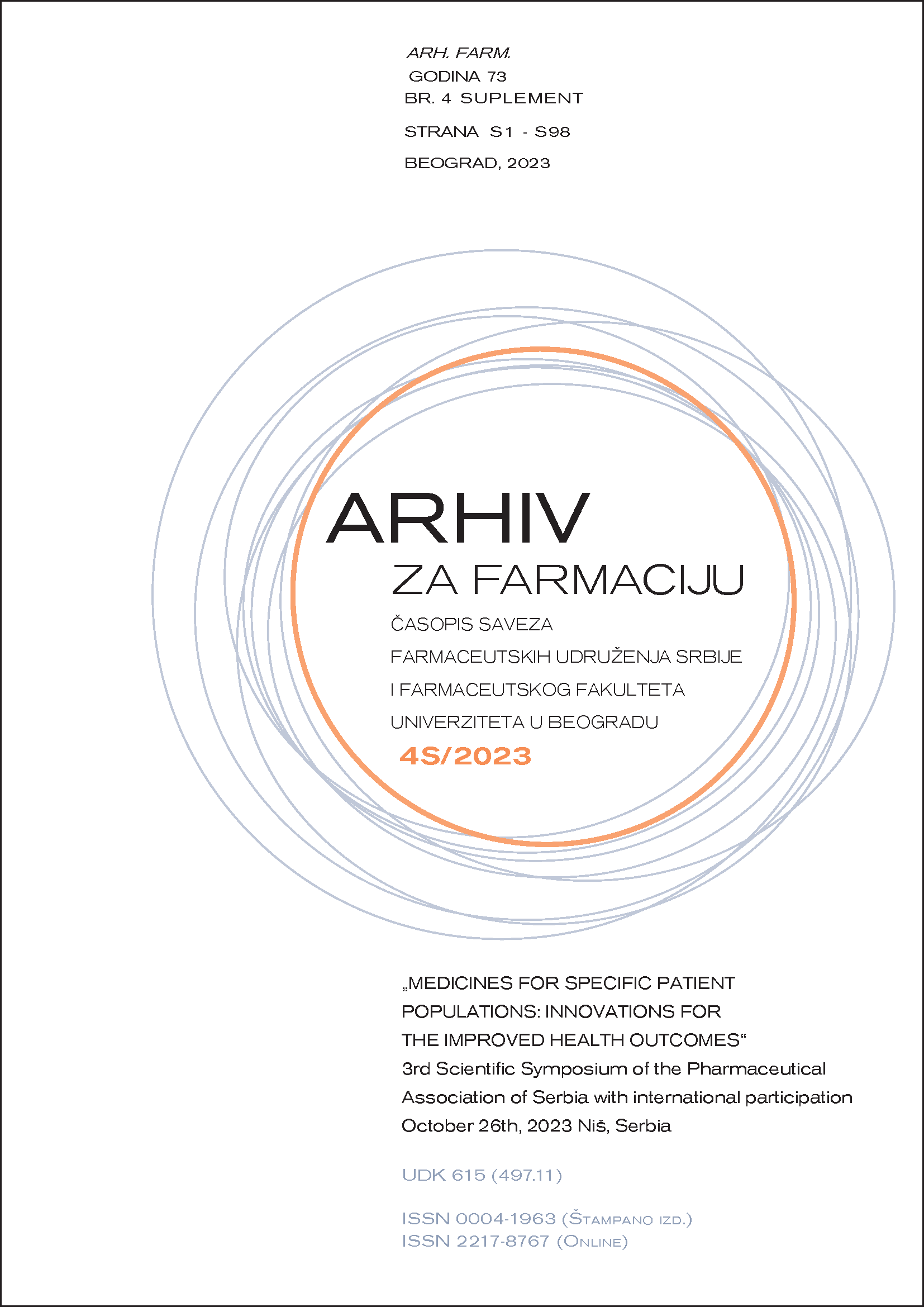PREPARATION AND CHARACTERIZATION OF IMMUNOCONJUGATES AS AN INITIAL STEP FOR TARGETED ALPHA THERAPY
Abstract
The basic principle of targeted alpha therapy (TAT) is that the alpha-emitting radionuclide is attached to specifically designed biomolecules, formulated as conjugates from antibodies, peptides and other small molecules. The design and characterization of the immunoconjugates, stand as critical steps in ensuring the efficacy of treatment, especially when they are employed for labeling with radionuclides, encompassing both beta and alpha emitters. Astatine-211 as an alpha emitter that has been of great interest in recent years can significantly provide the combined success of its cytotoxic power and the specificity of the targeting agent (1). The preparation of the immunoconjugates involves several steps and procedures, starting with the purification of the antibody using methods such as ultracentrifugation or gel filtration. This antibody can be derived either from a commercially available product or produced in the laboratory. Different chelators or prosthetic groups are used for conjugation, with the choice depending on the selected target molecule. Characterization of the immunoconjugates is a crucial step to assess their quality and functionality. Various analytical techniques could be employed to determine structural integrity and purity, including mass, Raman and infrared spectrometry, size exclusion chromatography, or electrophoresis (2). To enhance the stability of the product, further freeze-drying processes can be conducted using established protocols (3). Ongoing research in this field aims to establish protocols for preparing immunoconjugates and defining minimum quality criteria for these preparations. This progress could represent a significant step forward for in-vivo examinations and holds promise for the future of cancer research treatment using alpha radiotherapy.
References
1. Berdal M, Gouard S, Eychenne R, Marionneau-Lambot S, Croyal M, Faivre-Chauvet A, Chérel M, Gaschet J, Gestin JF, Guérard F. Investigation on the reactivity of nucleophilic radiohalogens with arylboronic acids in water: access to an efficient single-step method for the radioiodination and astatination of antibodies. Chem Sci. 2020 Nov 23;12(4):1458-1468.
2. Arev M, Dzodic П, Makreski P, Zivkovic J, Janevik-Ivanovska E. Electrophoresis and Raman spectroscopy characterization of integrity and secondary structure of p-SCN-Bn-DTPA- and p-SCN-Bn-1B4M-DTPA-conjugated trastuzumab. Farmacia. 2019; 67 (4): 621-626.
3. Mwanza W D, Aschalew AM, Arev M, Arsova-Sarafinovska Z, Apostolova P, Janevik-Ivanovska E. Standardization of a method for freeze-drying of antibodies as ready to use therapeutic radiopharmaceutical. Farmacia. 2020; 68 (1): 142 – 149.

